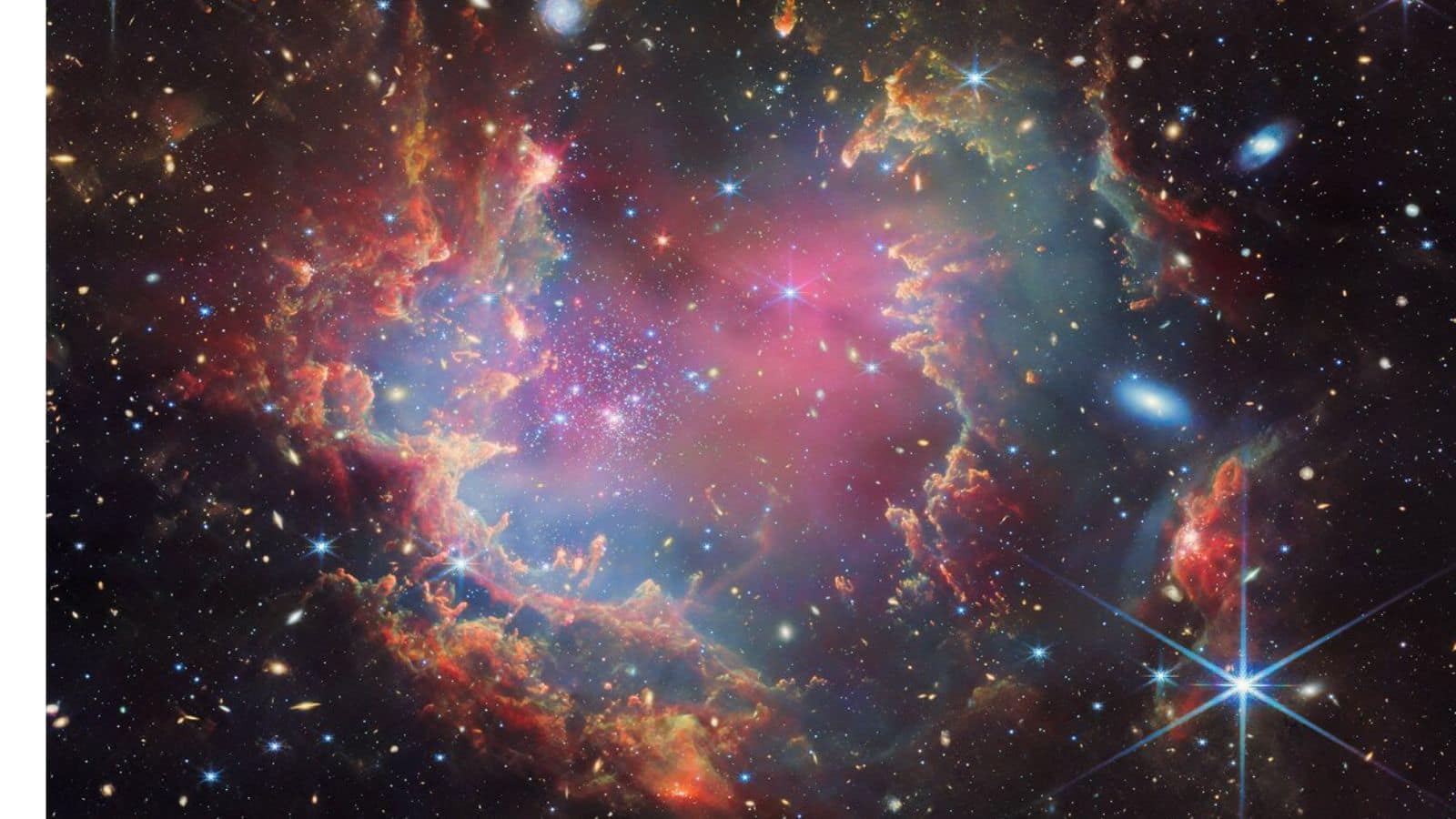
James Webb Space Telescope discovers 'failed stars' beyond Milky Way
What's the story
The James Webb Space Telescope (JWST), in conjunction with the Hubble Space Telescope, may have spotted a group of "failed star" brown dwarfs in the Small Magellanic Cloud (SMC). This is the first time such celestial bodies have been spotted outside our own galaxy. The suspected brown dwarfs are present at the edge of SMC, a dwarf galaxy close to the Milky Way, in a young star cluster called NGC 602.
Star cluster
A hotbed of star formation
Located some 200,000 light-years away from Earth, NGC 602 is a hot spot for astronomers as it is filled with dense clouds of dust and gas. These are the basic building blocks for the formation of stars and planets. The presence of an associated patch of ionized hydrogen, called N90, also suggests that this region is witnessing intense star formation.
Cosmic parallels
NGC 602 and early universe's 'metal-poor' galaxies
Due to their lack of elements heavier than hydrogen and helium, NGC 602 and the larger SMC make good analogs for "metal-poor" galaxies from the early universe. According to Elena Sabbi, a scientist at the University of Arizona, studying these newly discovered brown dwarfs could bring us closer to understanding how stars and planets formed under the harsh conditions of the early universe.
Infrared exploration
JWST's infrared capabilities aid in brown dwarf discovery
The dense lanes of gas and dust in areas like NGC 602 absorb visible light, making it difficult for astronomers. However, the JWST's Near-Infrared Camera (NIRCam) and Mid-Infrared Instrument (MIRI) are built to study long-wavelength, low-frequency infrared light that can pass through these clouds without getting absorbed. This is what has possibly enabled the first-ever detection of extragalactic brown dwarfs.
Failed stars
Understanding the nature of brown dwarfs
Brown dwarfs, also called "failed stars," are formed like stars from collapsing clouds of overly dense gas and dust but only achieve masses between 13-75 times that of Jupiter. They don't generate enough pressure and heat to fuse hydrogen into helium in their cores, which is what defines a main sequence star. Unlike most planets, brown dwarfs roam the cosmos untethered to parent stars.
Theoretical confirmation
Brown dwarf discovery supports theories of star formation
So far, astronomers have identified some 3,000 brown dwarfs within the Milky Way. The discovery of these extragalactic brown dwarfs seems to lend credence to theories about how nascent stars fail. Peter Zeidler, a scientist at the European Space Agency (ESA), said that their findings align well with the theory that the mass distribution of bodies below the hydrogen burning limit is simply a continuation of stellar distribution.